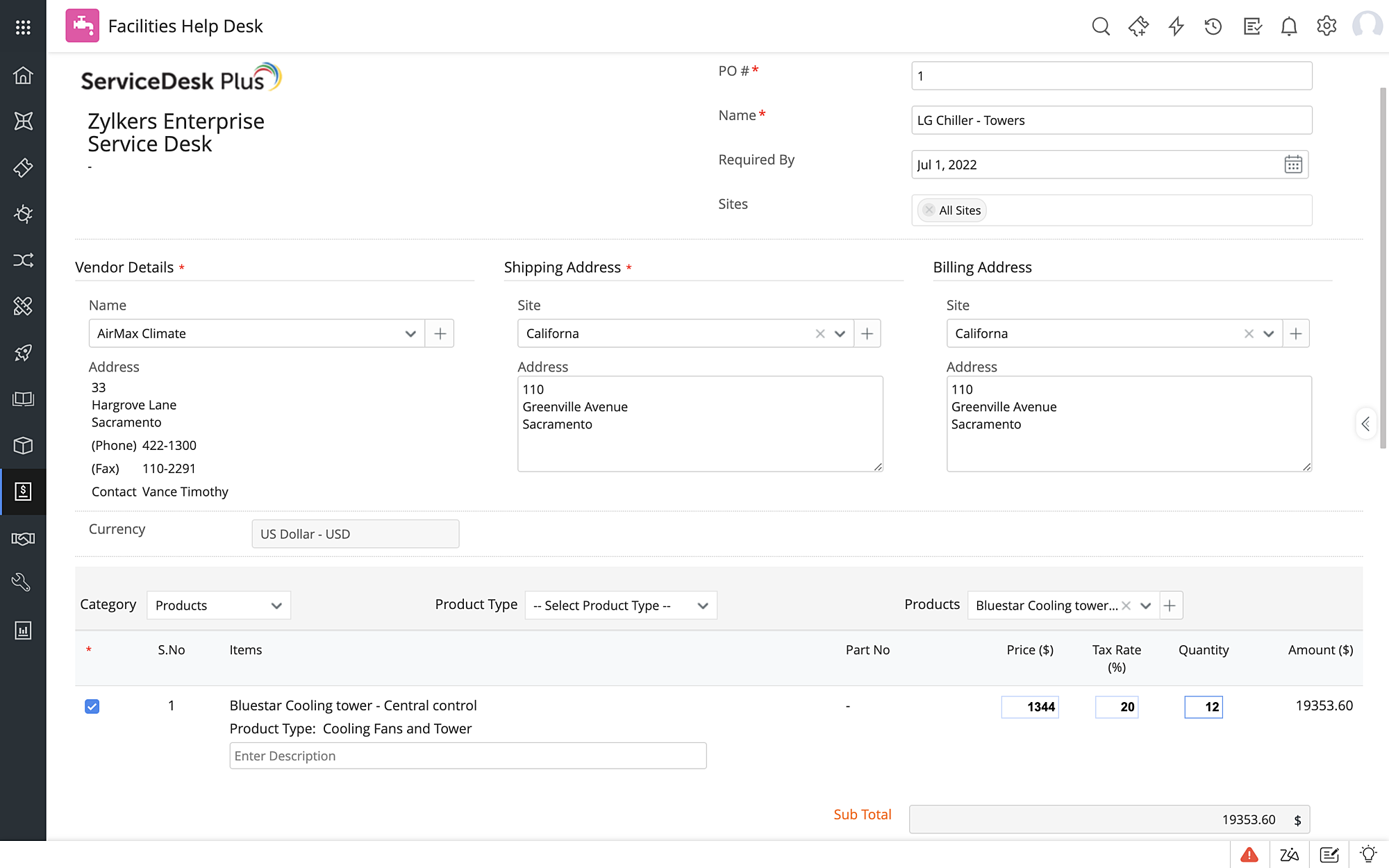The physical nature of the workplace has a direct impact on employee productivity. While the facilities team is directly in charge of maintaining a risk-free and efficient workplace, it is often not equipped with the right set of tools to ensure this. And many teams still run on spreadsheets or in-house tools that don't help them address their everyday challenges. Facility teams need to move away from legacy tools like spreadsheets and paper-based processes, and adopt unified service platforms to take on the current workplace paradigm that emphasises employee experience and engagement.
Facility management teams often need to overcome these challenges:

Lack of a central repository of assets
Facilities teams need a solution to oversee assets from cradle to grave. A dedicated solution is an efficient way to purchase, stock, operate, maintain, and retire assets. Therefore, they need accurate records of their assets with detailed information. For instance, not having a service schedule or a maintenance record on a building’s HVAC system can easily lead to a potential HVAC breakdown.
Difficulty in collaborating with other departments
Facilities teams cannot work in silos, since nearly all teams rely on them for various reasons. HR needs their cooperation on desk and badge allocation during employee onboarding, IT requires their assistance with ventilation and electrical to set up a server room, marketing and sales requires a functional meeting hall when they need it, and almost everyone relies on facilities while using the building's amenities. There needs to be an effective two-way channel between facilities and other departments.
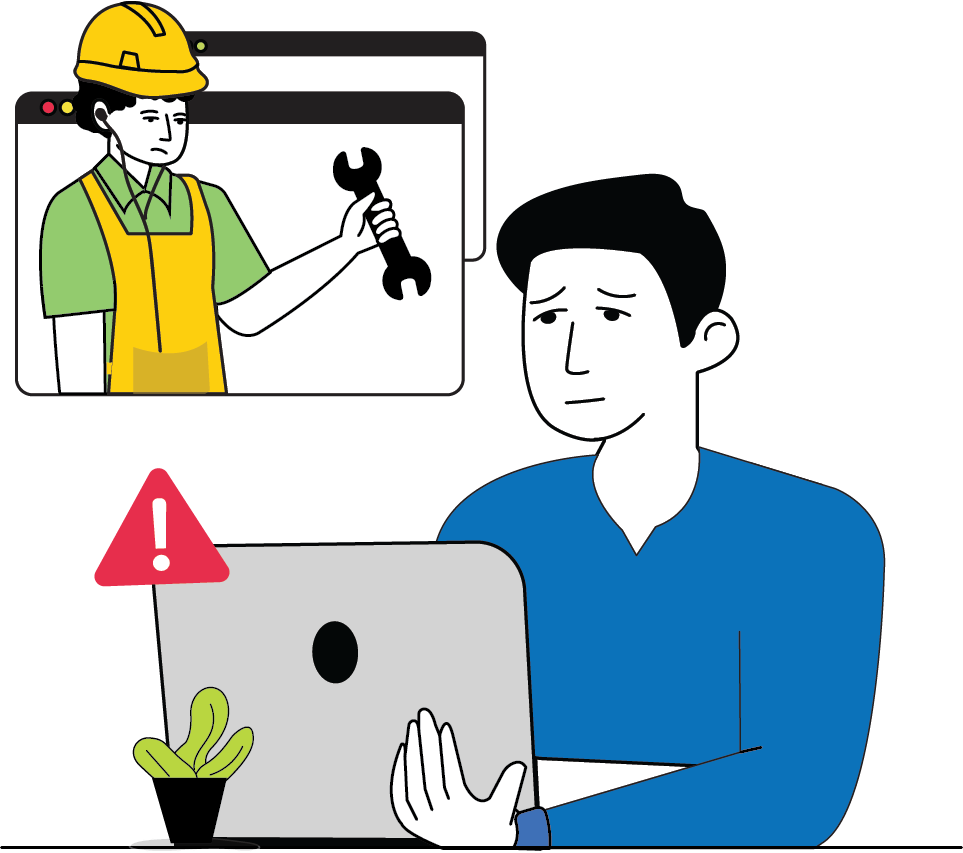

Lack of visibility over campus spaces
Facility management teams in larger organizations are expected to find better ways to designate space and disperse crowded work areas by utilizing more of the campus locations. Further, in businesses adopting hybrid work policies, facilities teams need to forecast and plan for optimal usage of campus properties without wasting resources. On top of this, many enterprises struggle with expanding their office spaces to match the inflow of new employees due to poor long-term vision of workspace management.
Keeping costs under control
An overrun budget indicates a poorly managed organization campus. For instance, facilities managers often need to negotiate with suppliers and vendors, and keep a track of their contracts, performance history, and warranties. They also need to maintain tight control over their projects that both full-time employees and temporary contractors work on to reduce the risk of costs exceeding the project budget.


Catching up with employee expectations
Facilities teams understand the importance of a workplace that drives productivity and inspires culture. These employee-experience enablers range from users requesting services without bringing their work to a grinding halt to configuring a workplace infrastructure that offers seamless collaboration and communication.
What can you do with ServiceDesk Plus?
Manage the complete asset life cycle
Keep a meticulous record of all assets from purchase to retirement
Team up with other departments from a central console
Carry out cross-departmental activities without any data or communication barriers
Digitize the campus and keep details at your finger tips
Visualize spaces and their relationships across all locations
Plan, track, and implement projects
Keep an eye on the big picture while tracking specific tasks precisely
Derive insights by consolidating employee interactions
Analyze employees experiences and eliminate workplace pain-points
How can you do it with ServiceDesk Plus?
Develop strategic asset management plans with integrated assets and a CMDB
- Establish an accurate inventory of all assets and consumables, capturing every necessary detail for maintenance.
- Maintain assets through out their life cycles with custom asset states along with depreciation.
- Map asset relationships visually to understand the impact of service failures with a configuration management database (CMDB).
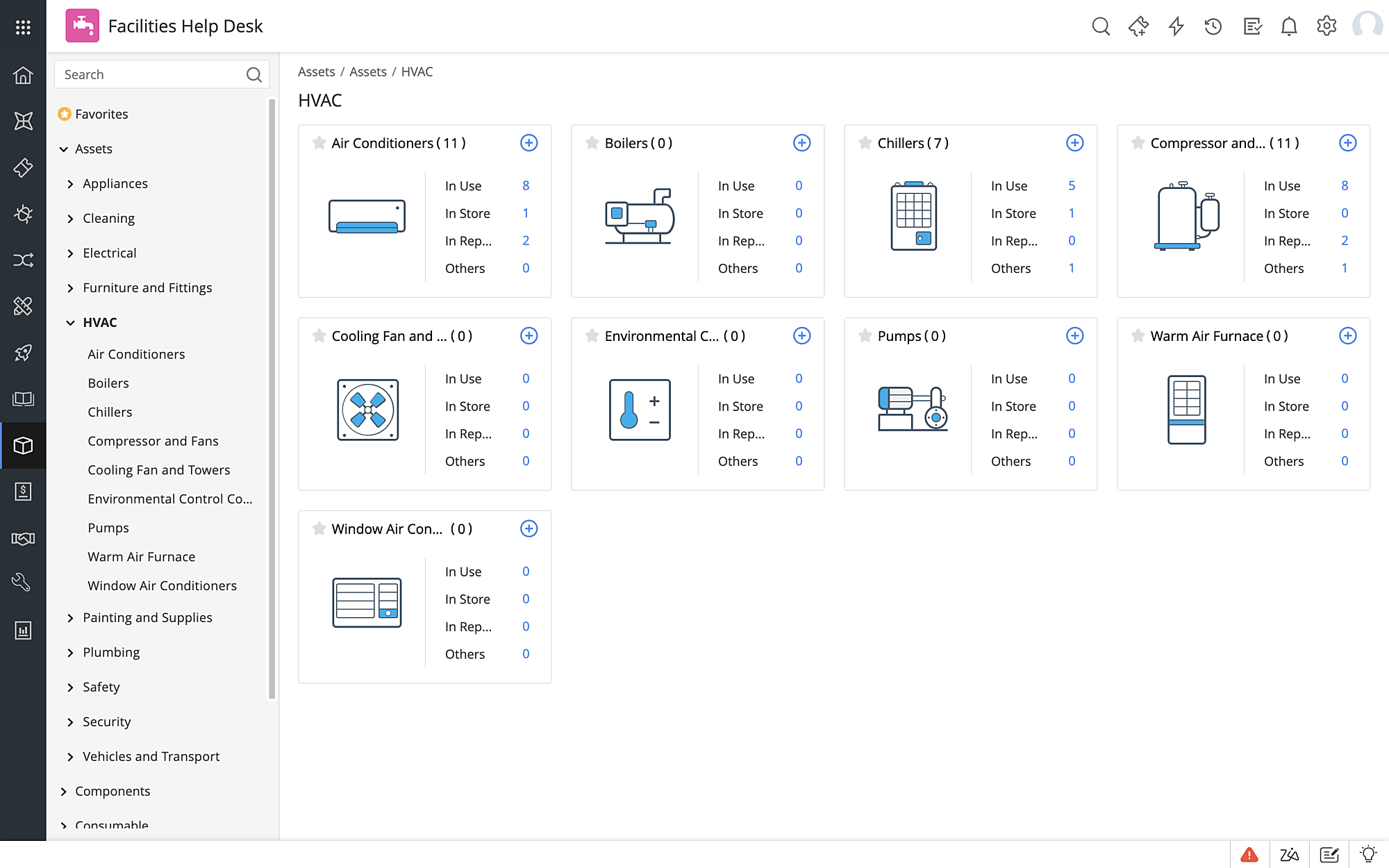

Establish a consistent employee experience with enterprise service management
- Leverage the common enterprise self-service portal for users to raise and track issues, deliver announcements, and find resolutions for basic requests.
- Quickly create a unique facilities instance with predefined templates, settings, and configurations.
Optimize campus usage and occupancy with a dedicated space management module
- Get a consolidated view of all levels of the organization, and visually search for and fetch details across multiple properties.
- Create and associate tickets, assets, amenities, documents, and facility services to each space for holistic service management.
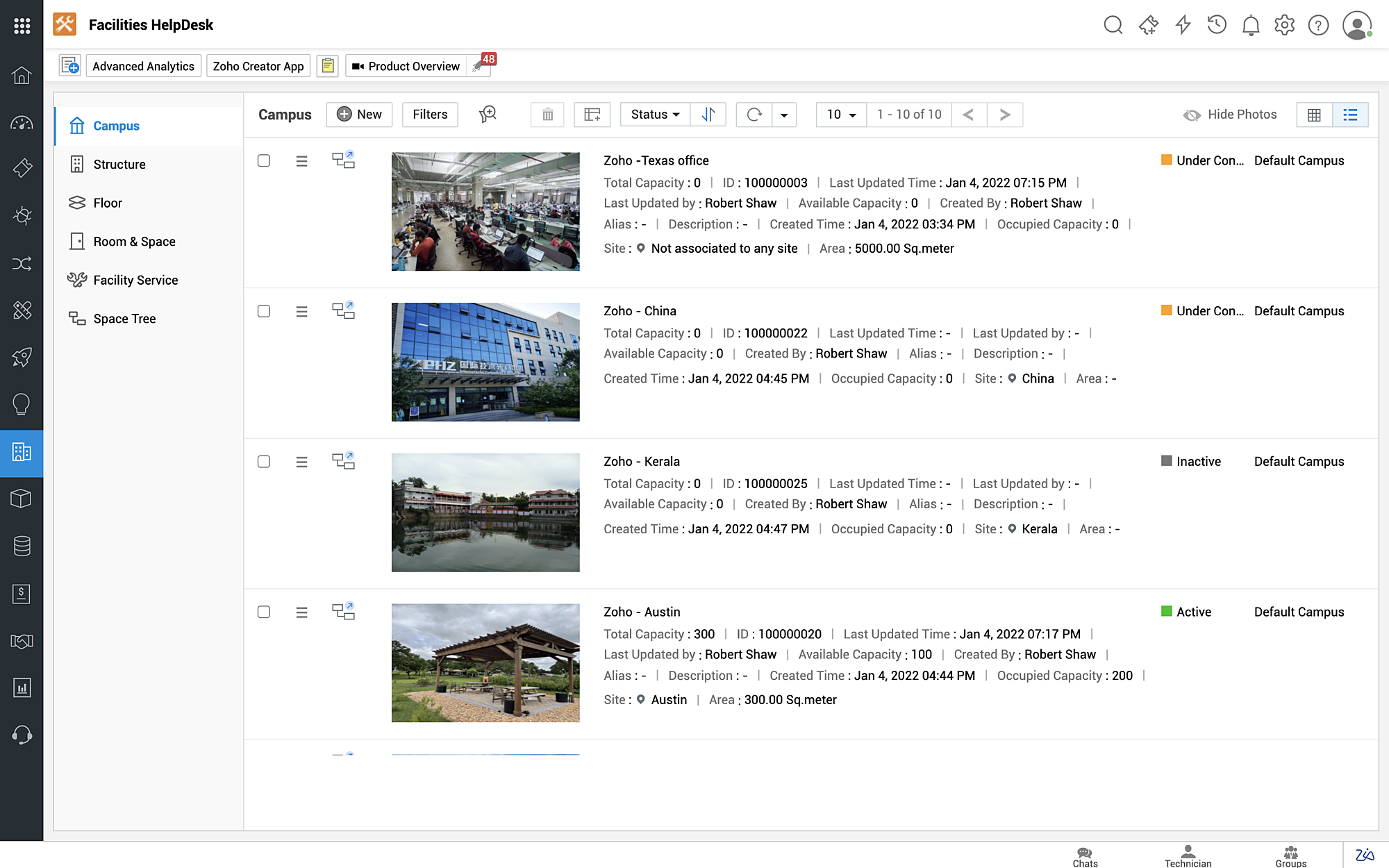
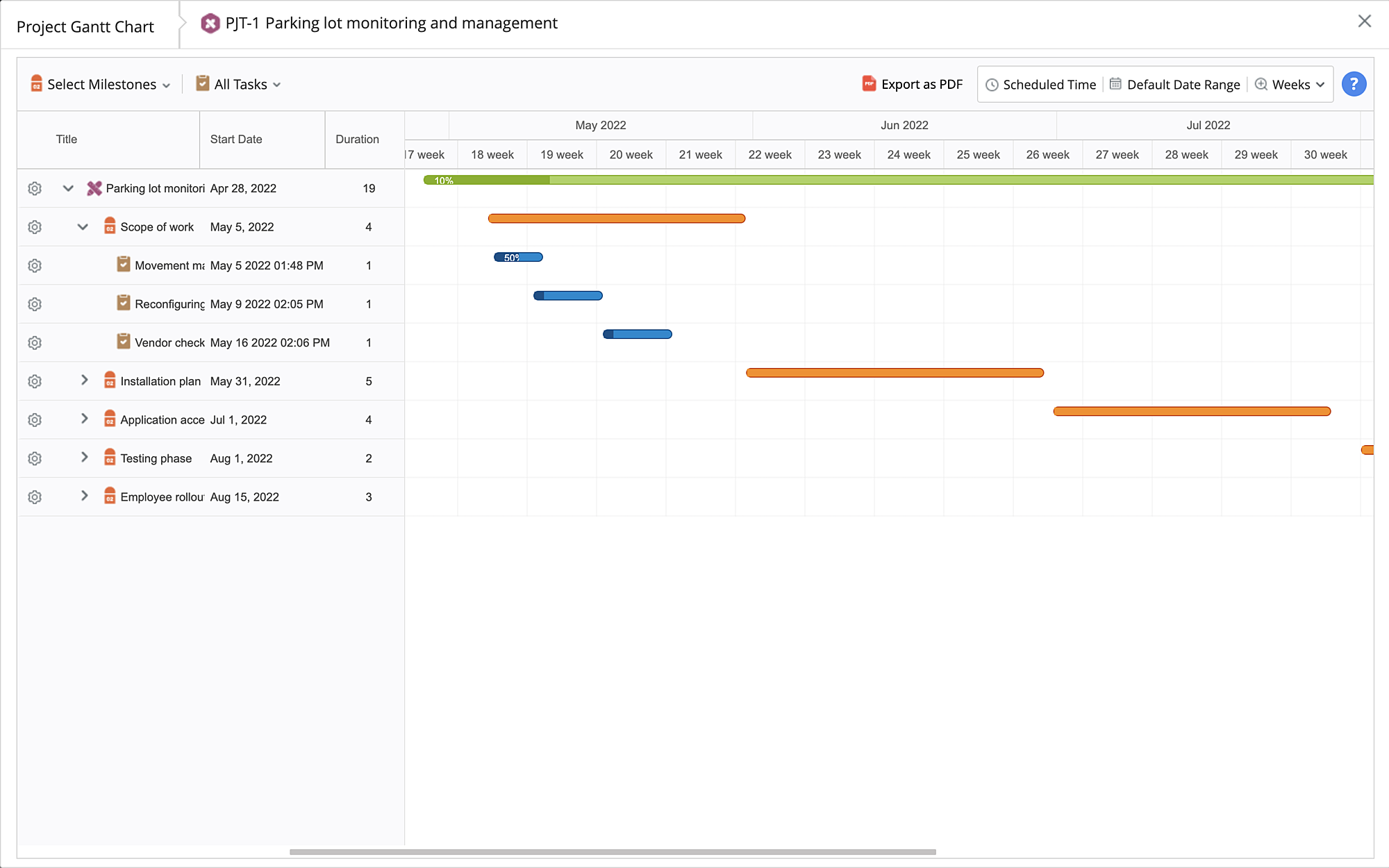
Control multiple projects and still get the work done on time with integrated Projects
- Stop overrunning your budget by keeping projects on track visually using Gantt charts.
- Record employee hours using timesheets.
- Monitor and manage the progress of resources with the resource management chart.
- Generate project reports instantly to analyze risks, time adherence, and much more.
Discover service insights with reports and analytics
- Obtain actionable information in minutes with over 180 canned reports such as most requested services and frequently raised incidents.
- Create real-time dashboards in ServiceDesk Plus and leverage Zoho Analytics to gain insights on the facility service operations.
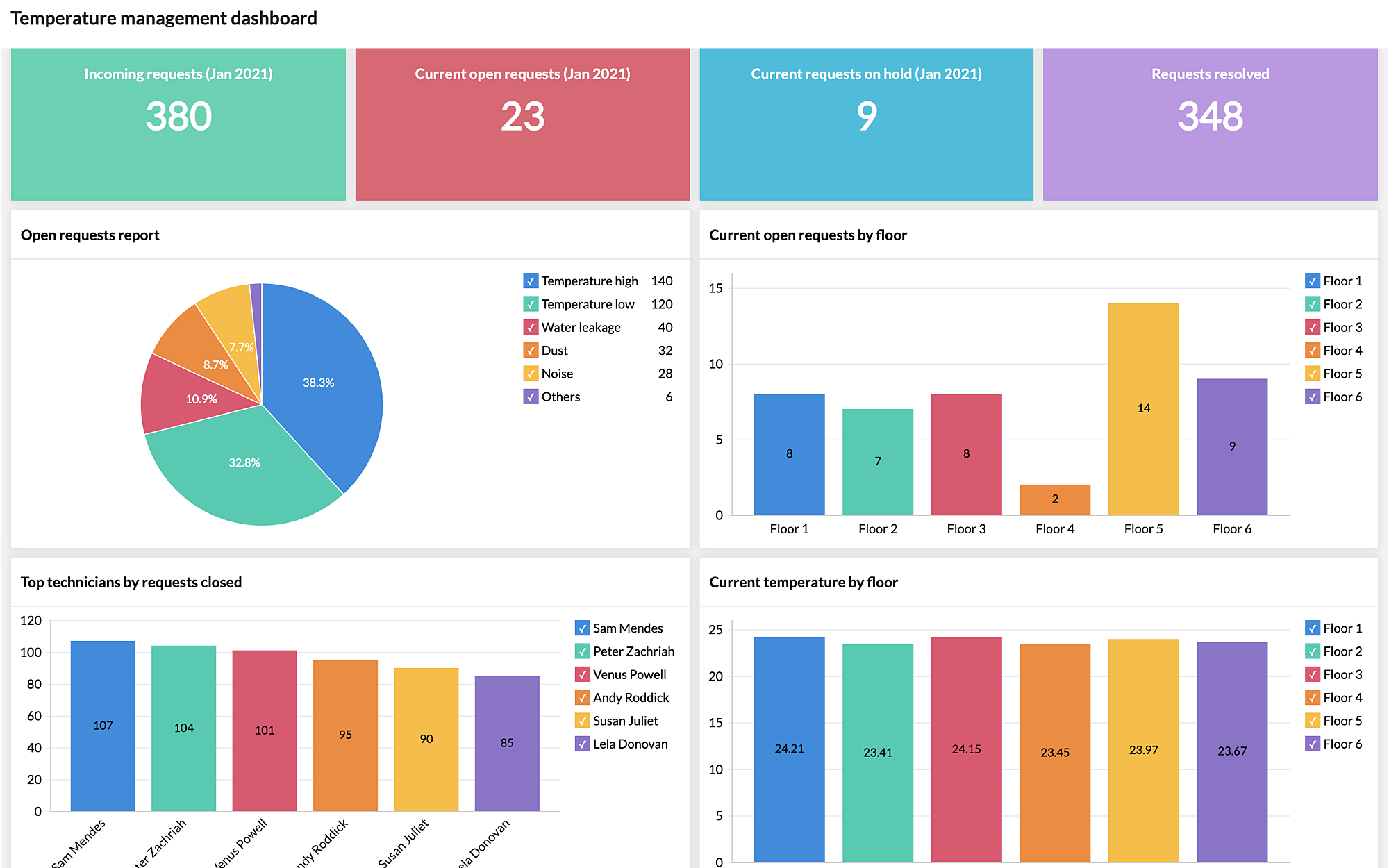
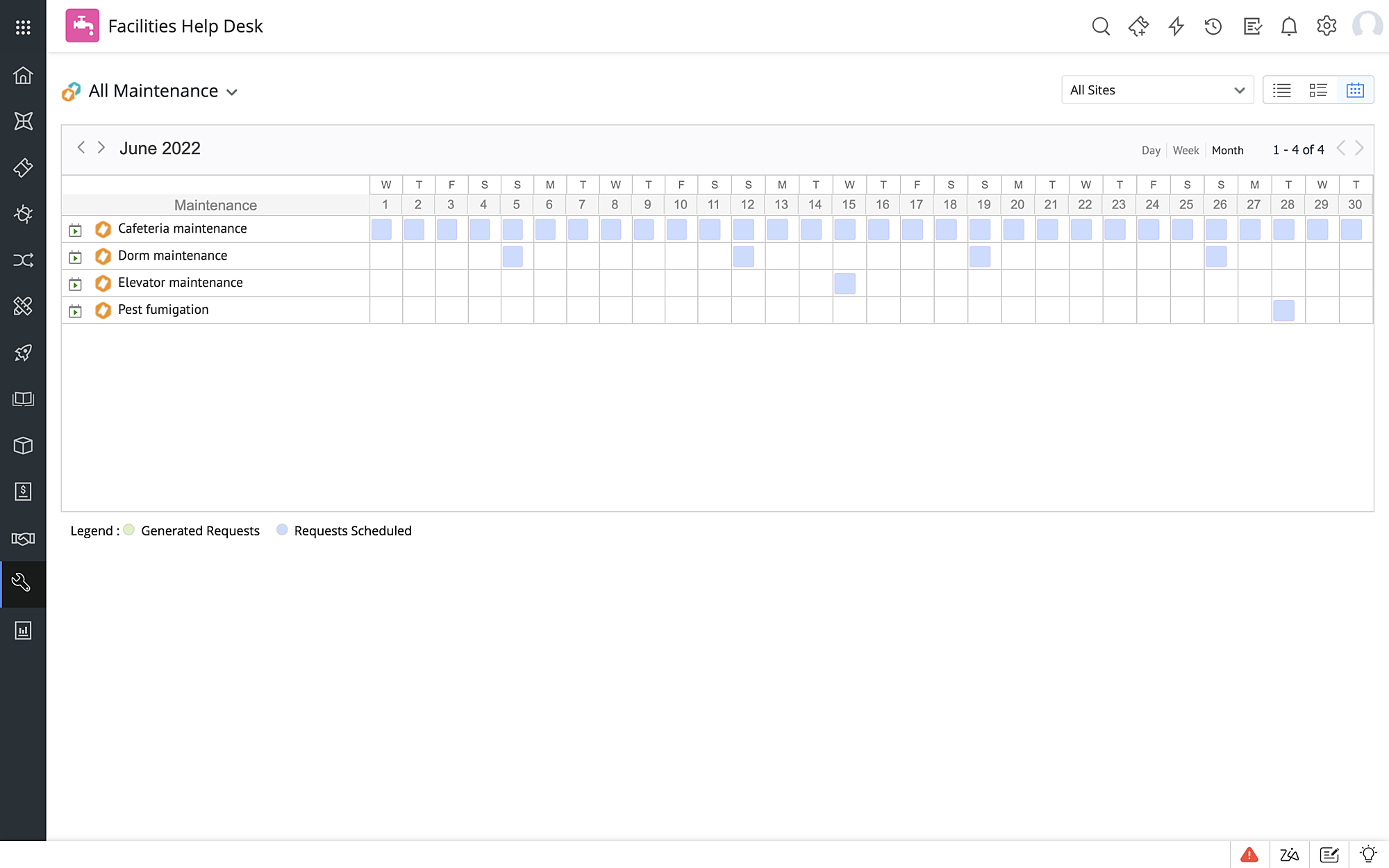
Simplify facility service processes with no-code automation
- Leverage business rules to streamline incoming tickets such as executing specific actions tickets from a certain floor.
- Create preventive maintenance tasks to automatically assign recurring service jobs to technicians and engineers.
Streamline vendor and supplier interactions with Purchases and Contracts
- Create purchase orders (POs) and manage their complete life cycles.
- Maintain a vendor catalog and associate their products with details such as price, warranty, and maintenance details.
- Keep vendors in the loop on placing and locating POs along with their statuses, invoices, and payments from within the PO.
- Assess the supply chain by generating custom reports to analyze the purchase trends, supplier contracts, and more.
